david molk
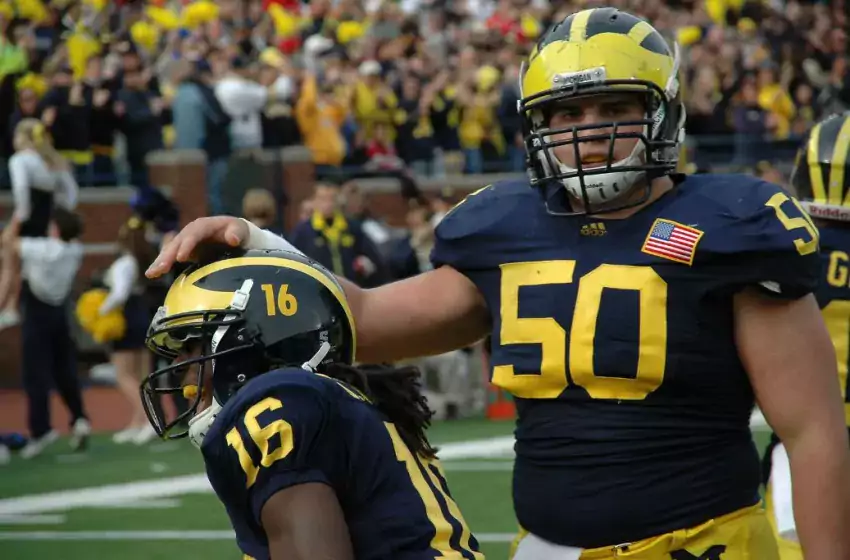
A series covering Michigan's 2010s. Previously: best blocks, the aughts.
Of course we would be the last to put out our all-2010s team. We meant to start with this episode but in the process of researching the OL a best blocks list was generated and had to be shared immediately.
Since it's a staff effort we decided these together and split the writeups. Then Brian got to 1200 words on Denard alone and we decided to split it into multiple posts. I'll note the author on each. On the methodology: instead of considering careers we will consider individual years, but the rule is we can only use a player once.
-----------------------------------
FULLBACK
Khalid "Hammer Panda" Hill (2016)
–BiSB
We're told this inspired an entire Warcraft expansion
25 carries. 39 yards. 10 touchdowns. Simply glorious. The Hammering Panda was one of the most effective goal line and short yardage weapons Michigan has ever deployed. Virtually every Hill carry was a dive out of the I-formation. Everyone knew it was coming. And it was unstoppable. It was a simple matter of physics.
When he wasn’t vulturing touchdowns, he was a surprisingly nimble and sure-handed receiving option. He was also a plus blocker, especially in space—his +56/-10 UFR grade for the season has a lot of running in it, but it's also ten points higher than the next best total by a fullback this decade. His 13 touchdowns from scrimmage tied with Fitz Toussaint (2013) for the most scores in a season during the decade (non-Denard division)… on 41 touches.
Second Team: BEN MASON (2018)
If you were a running back for Michigan in 2018, your key was often pretty straightforward: follow Bench. Mason was a devastating lead blocker whose entire raison d'etre was to smash into things as hard as possible. As a ballcarrier, Mason accumulated a Panda-esque 33 carries for 80 yards and 7 touchdowns. He was occasionally deployed as a feature back in the red zone, a cruel decision that forced defenders to make some real choices about how they wanted to spend their afternoons.
Honorable Mention: 2017 Henry Poggi (+48/-20.5), 2015 Sione Houma (+46/-19.5), 2013 Joe Kerridge (+39/-14, person capable of pass blocking)
[After THE JUMP: Many names, few necks]
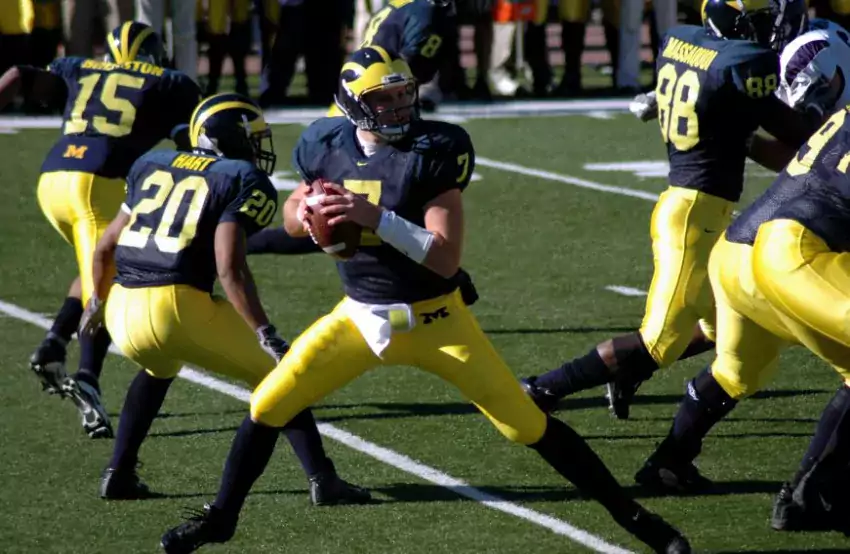
This one turned into a beast as I ran into a lot of close decisions and had to watch a lot of Wolverine Historian'd Michigan victories on the youtubes to get them right. The things I do for you people.
Previously: Pro Offense/Pro Defense, 1879-Before Bo, 5-Stars, 3-Stars, Extracurriculars, Position-Switchers, Highlights, Numbers Offense/Numbers Defense, In-State, Names, Small Guys, Big Guys
Rules: Scoring the way we might with Upon Further Review or Pro Football Focus, i.e. overall positive impact minus negative impact. Eligible seasons are those where the guy played with freshman eligibility (you can be a redshirt freshman but not retroactively). Also we're grading only on that freshman season, not what came before or after.
Freshman Eligibility: With a few wartime exceptions and some irregularities from back when college football was 'Nam, from 1896 (the formation of the Big Ten) until 1972 freshmen in football were not eligible to compete on varsity. Instead they had freshman teams, who often played on Monday nights. It's way beyond my capabilities for some offseason #content to read every account of every freshman game from the 20th century, so only varsity freshmen are going to count here.
----------------------------------------------------
Quarterback: Chad Henne (2004)
Lloyd Carr promised a battle for the job of replacing John Navarre. The candidates were RS sophomore Matt Gutierrez, who had never lost a game in high school, RS freshman southpaw (and future South Side-er) Clayton Richard, and the new five-star freshman yanked out of Penn State territory over the public objections of his head coach.
Coming out of spring the smart money was on Gutierrez, who'd wet his feet some in 2003. Nearing the end of fall practice that pick was locked in, and leaking out, along with rumors that the newcomer had replaced the future lefty reliever. Then during prep week to face Miami (NNTM) and Notre Dame, Gutierrez went down. A true freshman took the controls of the most NFL-like passing offense outside of the NFL.
Henne wasn't allowed to do much, especially early on. But he could do the one thing—the thing that would define his 2,743-yard, 25-TD (12-INT) freshman campaign. That is: throw it to Braylon. Henne's first long pass was a dead-on-balls fade to Braylon. His first touchdown was a 20-yard rocket to Braylon. His first 40-pass day included 18 in the direction Braylon. Of course, Braylonfest went in the direction of Braylon.
But as the season progressed Henne was picking up the offense. His Big Ten debut was a 16/26/236-yard performance against Iowa. He dispatched Indiana with lethal efficiency, and carried the offense the rest of the way. Though they lost to Ohio State (on a 27/54 day for Henne), a Wisconsin loss that day secured Michigan another trip to Pasadena.
Backup: Rick Leach (1975). Before I get attacked by an army of sexagenarians led by Dr. Sap, this is not a knock on Leach so much as recognition of Henne. If you did want to knock Leach, he wasn't much of a passer (32/100, 680 yards, 3 TDs, 12 INTs, 75.0 QBRtg) even in the context of his day. His rushing stats—611 yards/4.88 YPC and 5 TDs on 83 attempts—weren't great either. But the freshman had the right feel for the option, and that set up both RB Gordie Bell and FB Rob Lytle for 1,000-yard rushing seasons. Leach had a terrible Ohio State game, and while that motivated him to win three straight afterward, it didn't feel so great in '75.
HM: Tate Forcier (2009), Elvis Grbac (1989), Steven Threet (2008), Ryan Mallett (2007)
[AFTER THE JUMP: A more freshman year than 2004.]
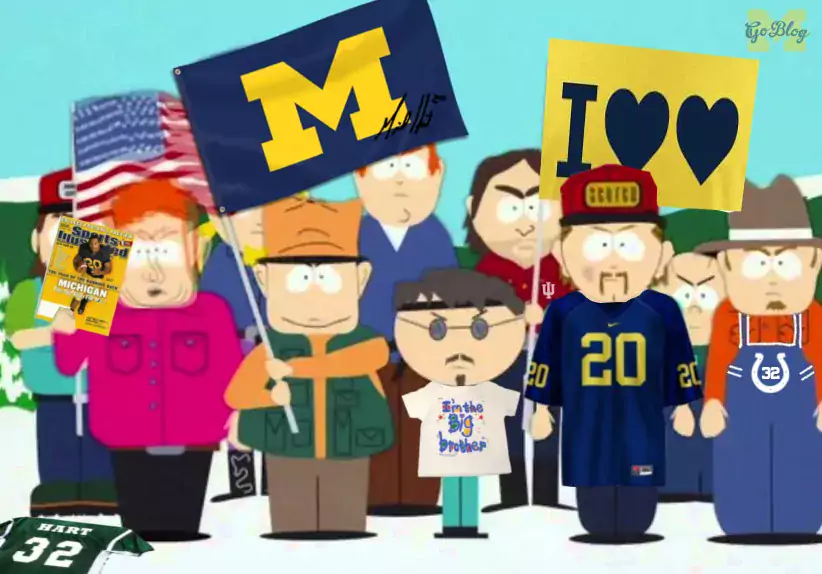
Last offseason I was making these Michigan All-____ Teams and I didn't get around to all of the ideas. So let's.
Previously:
- Ancient History: 1879 to 1968
- The 5-stars
- The 3-stars
- The Extracurriculars
- Position-Switchers
- Highlights
- All-Numbers Team Part I: The Offense
- All-Numbers Team Part II: The Defense
- The Best of Michigan (the state)
- All-Name Team
Today's Rules: You must be in the bottom quartile of height for your position and get extra points for being shorter than that. Weight doesn't matter as much as height (because most of these guys had to add a lot of it). Also this has to be relative to the players of your era—with a heavy recency bias—because there was a time when a six-foot offensive tackle was considered huge. For example, here's 5'11" Anthony Carter with some of the other 1979 offensive starters (via a Dr. Sap article on MVictors):
I'm going to use my discretion as we go, but if a player wasn't remarkably tiny for his era, even if he would be in ours, he doesn't count.
The problem: Rosters lie, especially regarding these players, because listing a short guy at his real height could depress his pro future. Where I have knowledge of a guy's actual height I'll use that, and beyond that I'm just going to do my best.
Quarterback: Denard Robinson
Last listed size: 6'0"/197 (2012)
[Brian Fuller]
Strangely, 2019 recruit Cade McNamara, at 6'1", is the third-shortest Michigan scholarship quarterback since Bo, with Denard and 2008 proto-Denard Justin Feagin both listed at a straight six. Or maybe that's not so strange because height in a quarterback is so highly valued. In my opinion it's highly overrated; the last two Heisman winners were Oklahoma quarterbacks listed at 6'0" and 5'11", QED. Notably, despite Michigan's clear preference for tall guys, some of their best were all on the shorter side, including Chad Henne and Shea Patterson, both just 6'2". Anyway, the rosters lied about Denard's height, which was probably 5'11" or just under it. I should mention the 2011 roster lists Denard as 5'9", which is wrong but feels right. His height led to a few batted balls, but since his center also appears later on this list (and Ricky Barnum wasn't very tall either), and because defenders in space had to approach warily lest Denard escape the pocket, the % of batted balls from Denard in the UFRs is lower than that for Henne.
Honorable Mention: Dennis Brown (5'10"/175), Tate Forcier (6'1"/190), Harry Newman (5'7"/174), Boss Weeks (5'7"/161) lots of other old dudes. Michigan's first great quarterback (and college athletics' first great athletic director) Charles Baird was listed at 5'6". Michigan's shortest QB on the Bentley database was 1914-'16 bencher Harold Zeiger, at 5'4".
[After THE JUMP: Not who you think]
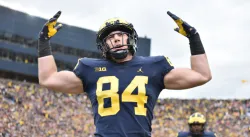
It’s “Recruiting rankings don’t matter!” guy’s turn to forward a link that proves nothing except we’re short on #content in the offseason
![CuVftORVYAAvgVD_thumb[1] CuVftORVYAAvgVD_thumb[1]](https://mgoblog.com/sites/default/files/CuVftORVYAAvgVD_thumb%5B1%5D_thumb.jpg)
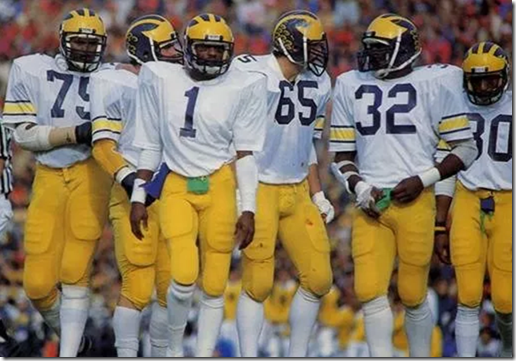
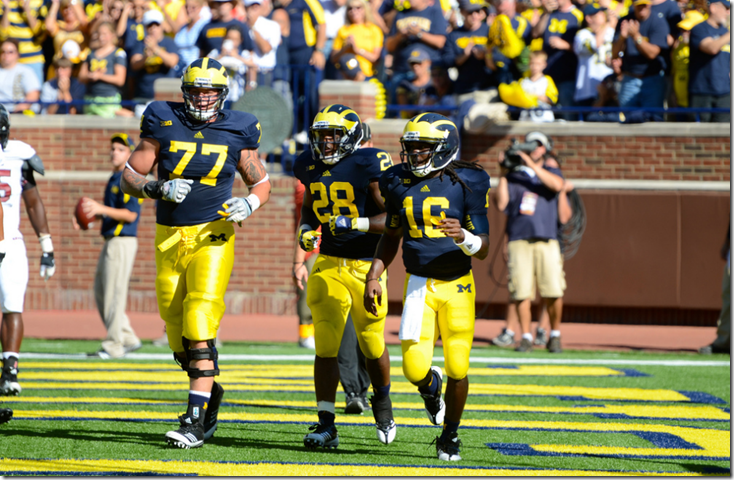
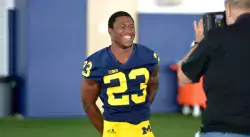
2